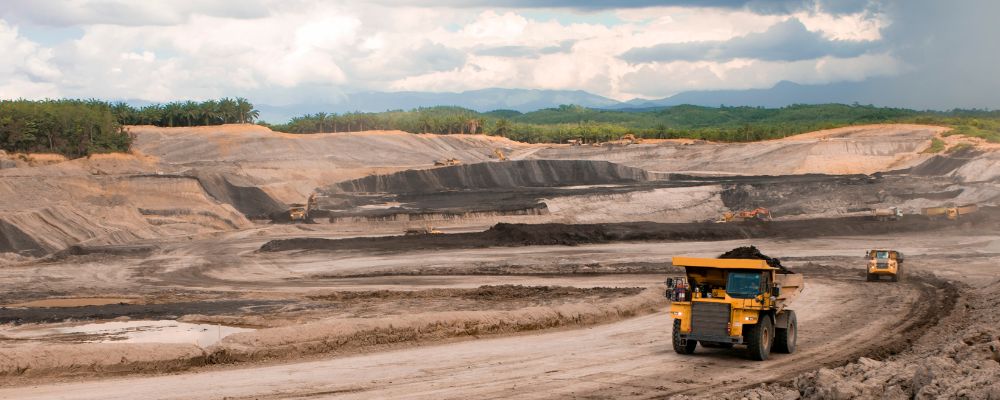The mining industry has played a significant role in the development of Europe for centuries. From precious metals to coal, its output has made it one of the most critical industries in the continent’s history. One hundred fifty years ago, Europe accounted for 40% of the global mining output, and its strength led to the rise of powerful nations, shaped their economies, and transformed societies.
While it is not the force it once was, with the continent now accounting for around 3% of the world’s total mineral production, Europe continues to have a robust and vibrant mining industry as it is home to some of the world’s largest mines and companies and continues to play a vital part in many countries’ economies.
The mining industry is also a significant employer, with, for example, the 27 EU countries employing around 400,000 people, generating billions of euros in output value each year.
This blog will explore the history of mining in Europe, leading mining countries, prominent mined resources, and the most searched mining jobs across the continent. So, let’s dig deeper into the fascinating world of European mining.
A Brief History of Mining in Europe
As explored in our recent blogs on mining in Australia and the US, the industry has helped enhance societies and people’s way of life for centuries. Europe is no different, and the continent is rich in mineral resources, including coal, iron ore, tin, lead, zinc, copper, nickel, and gold.
The history of mining in Europe dates back to the Bronze Age at around 4,000 BC, when humans used primitive tools and surface mining techniques to extract metals such as tin, lead, and zinc from the earth. Fast forward to around 1,400 BC to 1,100 BC, and early copper and iron ore underground mines were developed and expanded.
Due to years of war and upheaval across the continent, it wasn’t until 1000 AD that mining began to truly establish itself in Europe. The demand for minerals such as iron and coal increased, meaning the number of underground mines grew, particularly in Spain, Germany, Ukraine, and France.
During the Industrial Revolution of 1870 to 1914, mining was transformed into a large-scale industry as new machines such as steam engines and hydraulic presses were introduced. These new technologies increased mining efficiency and production and enabled the extraction of more minerals.
Largest Mining Countries in Europe
Europe is home to several global mining powerhouses that heavily contribute to the world’s overall mineral extraction totals. Next, we will look at the countries leading the way in the European mining industry.
Russia
Russia is the largest mining country in Europe, accounting for around 14% of the world’s mineral extraction. The country’s vast landmass, estimated at $75 trillion, is rich in mineral resources. These resources include coal, iron ore, copper, gold, and silver. In addition, it is the third-largest producer of nickel in the world, sitting just behind Indonesia and the Philippines. Furthermore, it is also the world’s third-largest producer of gold, sitting behind China and Australia.
Russia is also home to the fourth largest gold mine in the world, the Olimpiada gold mine. Based in the Krasnoyarsk region, the mine employs 3,381 workers and extracted 43.2 tonnes of gold in 2021.
Turkey
Turkey is a leading European mining country with diverse mineral resources, including chromium, copper, zinc, and gold. The country is also one of the world’s largest producers of boron, holding 73% of the world’s total reserves (3.3 billion tonnes). Boron is essential for the manufacture of ceramics, glass, and detergents. Turkey is also one of the largest gold producers in Europe, with approximately 421 tonnes being extracted since 2000.
The Turkish mining industry is growing rapidly, with the country’s exports rising by 9.1% to $6.5 billion in 2022. Furthermore, it has a bright and dynamic future ahead of it, as it is reported that around 40% of its prospective mining areas remain unexplored.
Sweden
Sweden is the third-largest mining country in Europe, and its mineral resources include iron ore, copper, zinc, lead, silver, and gold. Iron ore accounts for 91% of the continent’s total production.
The Swedish mining industry is highly innovative, focusing on sustainability and environmental protection. The country is also a leader in exploring and producing rare earth elements essential for many modern technologies, including electric vehicles and wind turbines.
Sweden aims to triple its mine production by 2025 while considering long-term sustainable growth and social, cultural, and social aspects. This expansion will provide more than 50,000 new jobs.
Poland
Poland is a country that has been blessed with an abundance of mineral resources, including zinc, copper, lead, rock salt, and sulfur. As a result, the country is the ninth-largest producer of coal worldwide and the largest hard coal producer in Europe. In 2021, it produced 51.9 million tonnes of brown coal and 55.2 million tonnes of hard coal. Poland also accounts for 56% of Europe’s total copper production.
The largest mine in the country is the Belchatow coal mine located in Lodz Voivod. It is estimated to hold reserves of 1,930 million tonnes of coal, and its annual coal production is approximately 50 million tonnes. The mine is expected to stay in operation until 2035. Coal
Key Mining Resources in Europe
Whilst producing other materials such as iron ore, boron, and copper, the mining industry is dominated by two materials, coal and gold. So, let’s explore these two precious and sought-after mining resources.
Coal
More than fifty coal mining regions are spread across 17 countries in Europe. Poland and Germany are the biggest producers of coal, followed by Ukraine, Serbia, and the Czech Republic. While coal extraction has dropped by 3% each year over the last decade, the amount of coal mined in Europe still stood at 480 million tonnes in 2020.
Within the 27 EU countries, hard coal production was 57 million tonnes. However, due to the reduction in coal mining, mainly due to climate and environmental concerns and the rise in renewable energy, this production has decreased by 79% from the 277 tonnes produced in 1990. As a result, between 2018 and 2021, the EU reduced its hard and brown coal consumption by 25%.
Furthermore, despite the downward trend in coal production, several significant projects are still on the horizon, including developing new mines or expanding existing ones. Most of these projects are in Turkey, Poland, and the Western Balkans.
The five largest coal mines in Europe are as follows:
- Belchatow Mine – Lodz Poland
- Garzweiller Mine, North Rhine-Westphalia, Germany
- Maritsa East Mine – Stara Zagora Province, Bulgaria
- Hambach Surface Mine – North Rhine-Westphalia, Germany
- Ptolemais, South Field Mine – Ptolemais, Greece.
Gold
While there are more prominent regions for gold mining worldwide, Europe’s gold mining sector is alive and vibrant. The production of gold in Europe (excluding Russia) grew 12% year-on-year in 2020 vs 2019.
Gold is mined in Finland, Bulgaria, Turkey, Spain, and Sweden. Finland and Sweden are the top two EU countries for gold production. However, Turkey, which only started mining gold in the early 21st century, now produces more gold than all of the EU countries.
The largest gold mines in Europe include the following:
- Copler Altin Madeni – Erzincan Province, Turkey
- Tuprag Kisladag Altin Madeni – Uska Province, Turkey
- Kittila – Lapland County, Finland
- Chelopech – Sofia Province, Bulgaria
- Ada Tepe – Krumovgrad, Bulgaria

